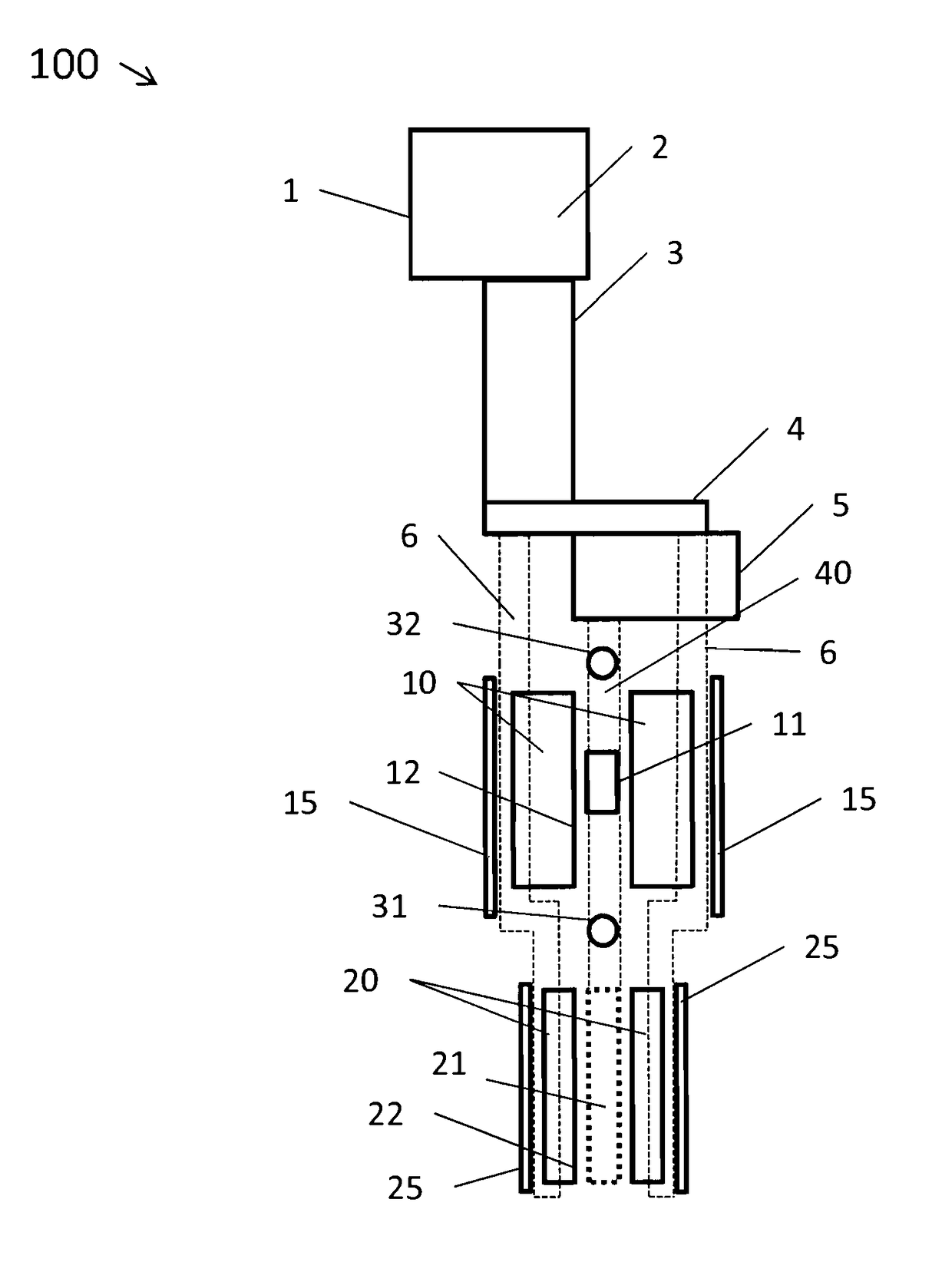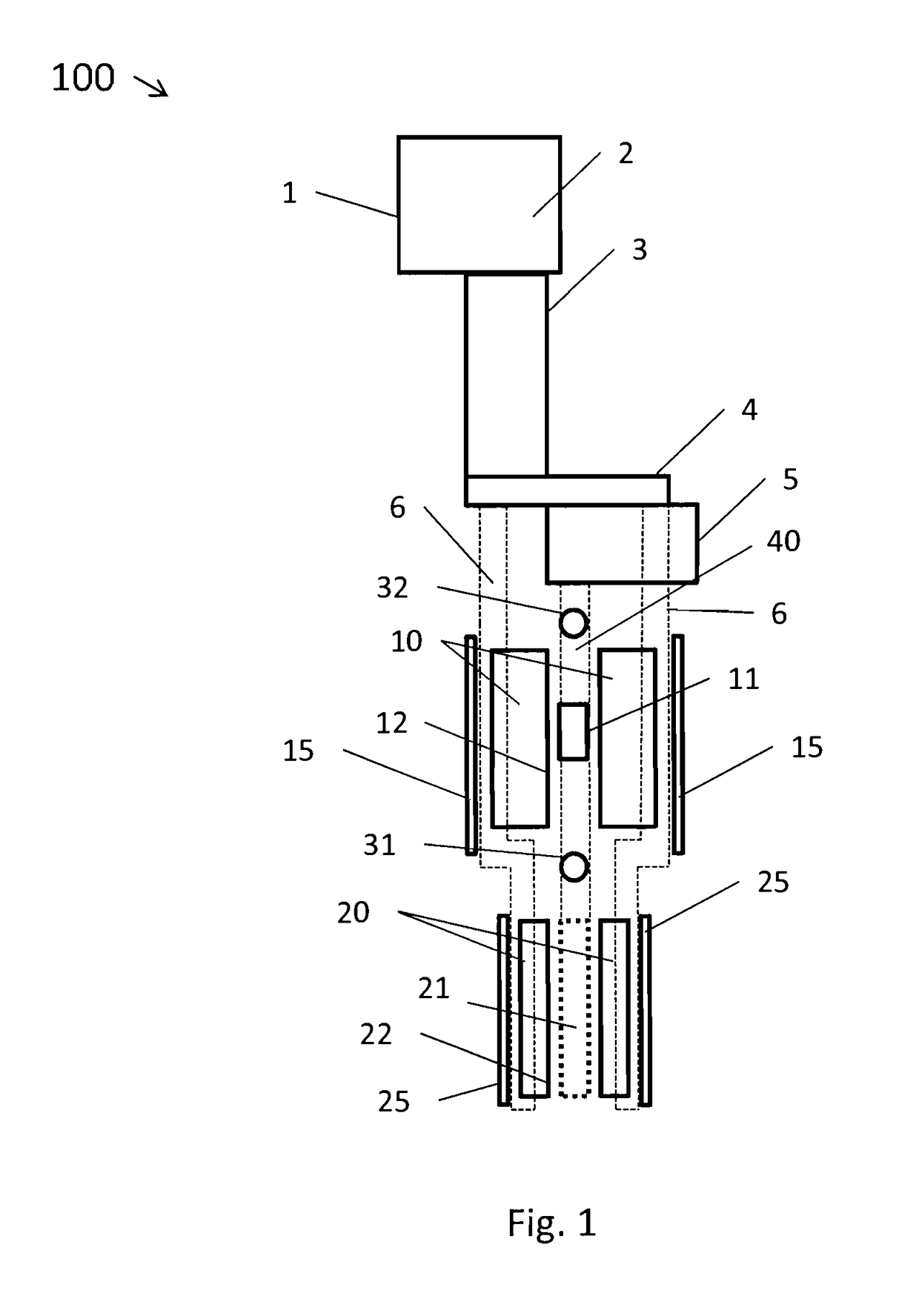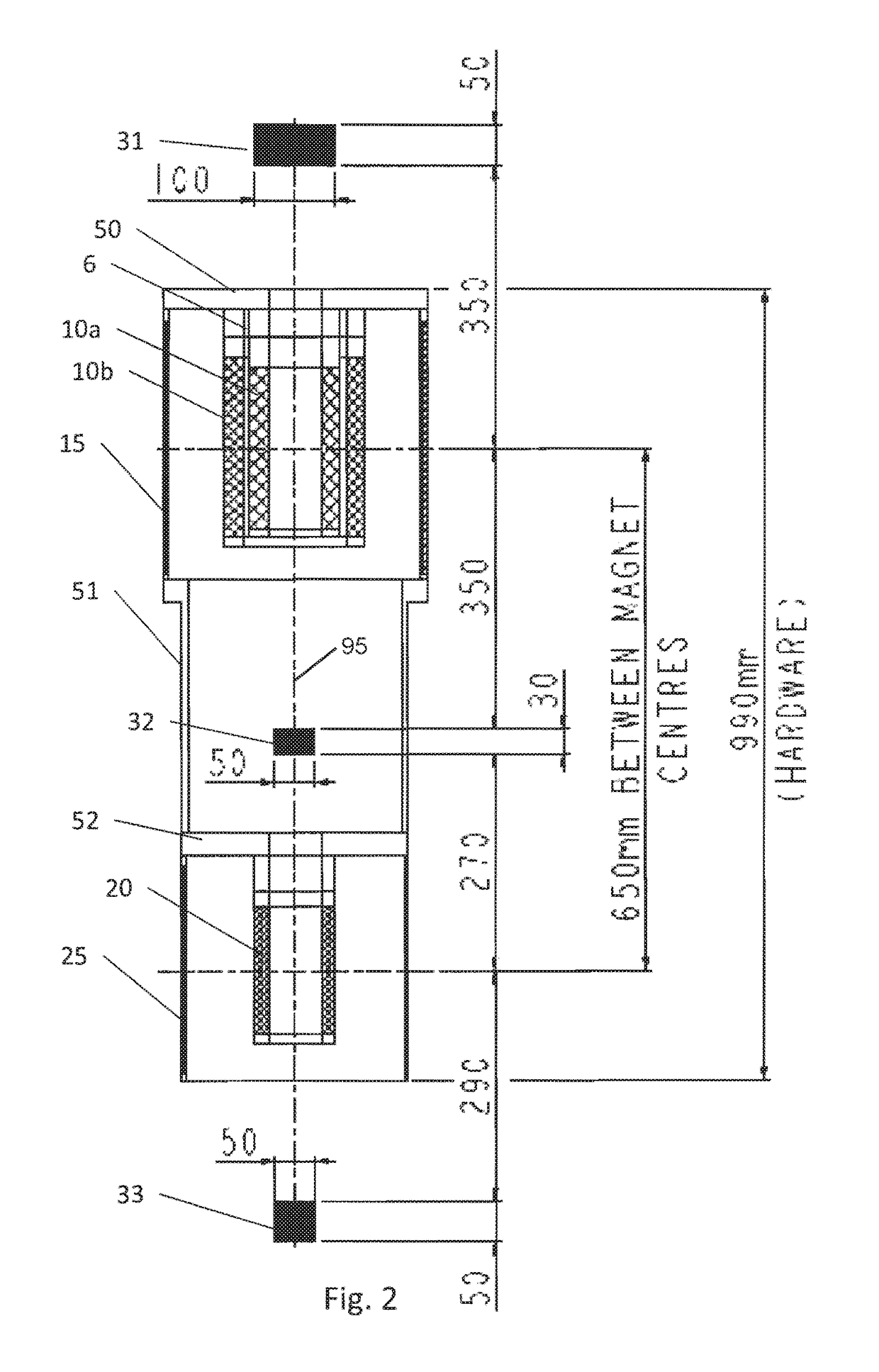Cryogenic cooling apparatus and system
a cooling apparatus and cryogenic technology, applied in the field of cryogenic cooling apparatus, can solve the problems of increasing the amount of physical materials present and placing additional requirements on the cooling system, and achieve the effects of compact geometrical arrangement, reduced axial length, and compact arrangemen
- Summary
- Abstract
- Description
- Claims
- Application Information
AI Technical Summary
Benefits of technology
Problems solved by technology
Method used
Image
Examples
Embodiment Construction
[0027]FIG. 1 shows an example demagnetisation cooling system generally illustrated at 100. The cooling power to the system is provided by a pulse tube refrigerator (PTR) 1 which in the present case is a two stage device. This has a cooling head 2 from which extend pulse and regenerator tubes generally illustrated at 3. Although this is a two stage device, only the second, lower temperature stage 4 is illustrated for simplicity. The tubes 3 and second stage 4, together with the further apparatus to be described below, are all contained in a vacuum cryostat which is not illustrated in FIG. 1 for clarity purposes. Particularly the PTR 1 is capable of providing a cooling power of around 1 Watt at a temperature of 4.2 Kelvin at the second stage 4. This cooling power is used within the present system in two ways. Firstly, the second stage 4 is used to provide cooling power for a dilution refrigerator shown schematically at 5. Secondly, the cooling power of the second stage 4 is used to co...
PUM
| Property | Measurement | Unit |
|---|---|---|
| temperature | aaaaa | aaaaa |
| temperature | aaaaa | aaaaa |
| temperature | aaaaa | aaaaa |
Abstract
Description
Claims
Application Information
 Login to View More
Login to View More - R&D
- Intellectual Property
- Life Sciences
- Materials
- Tech Scout
- Unparalleled Data Quality
- Higher Quality Content
- 60% Fewer Hallucinations
Browse by: Latest US Patents, China's latest patents, Technical Efficacy Thesaurus, Application Domain, Technology Topic, Popular Technical Reports.
© 2025 PatSnap. All rights reserved.Legal|Privacy policy|Modern Slavery Act Transparency Statement|Sitemap|About US| Contact US: help@patsnap.com



